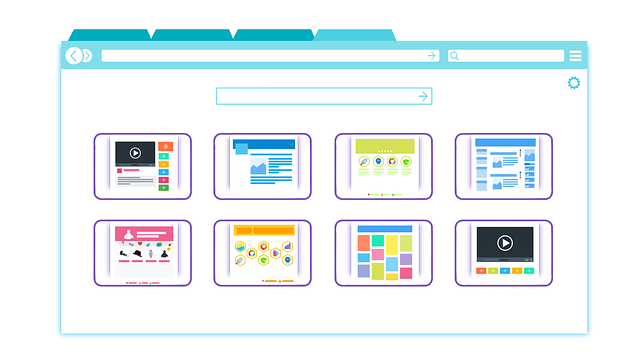Chatbots on e-commerce websites have become a game-changer in customer engagement, offering instant, personalized support through sophisticated AI and natural language processing capabilities. They provide real-time assistance, answer frequently asked questions, recommend products based on user preferences and history, and facilitate seamless transactions around the clock. By automating common queries, chatbots reduce the need for human intervention, allowing customer service representatives to focus on more complex issues. These intelligent systems continuously learn from each interaction, becoming more adept at providing accurate assistance, which not only enhances customer satisfaction but also contributes to operational efficiency and cost savings. The integration of a well-designed chatbot into an e-commerce platform ensures that users receive immediate help, tailored shopping experiences, and support throughout their purchasing journey. This results in fewer abandoned carts, higher repeat purchase rates, and improved overall satisfaction with the e-commerce service. Case studies from various sectors demonstrate that chatbots can significantly streamline operations, reduce costs, and drive sales growth, making them an essential tool for any e-commerce business looking to thrive in a competitive online marketplace.
Chatting with customers has evolved beyond human interaction, as AI-driven chatbots are now integral to the e-commerce experience. This article delves into the transformative role of chatbots within online retail environments, illuminating their capabilities and technical intricacies. We’ll explore what distinguishes a superior chatbot for an e-commerce website, focusing on enhancing consumer engagement and satisfaction. From the back-end mechanics to real-world success stories, join us as we navigate the intersection of artificial intelligence and customer service in the digital marketplace.
- Understanding the Role of Chatbots in E-Commerce: An Overview
- The Technical Workings Behind E-Commerce Chatbots
- Key Features to Look for in a Chatbot for E-Commerce Websites
- Enhancing Customer Experience with AI-Powered Chatbots in E-Commerce
- Case Studies: Successful Implementation of Chatbots in E-Commerce Businesses
Understanding the Role of Chatbots in E-Commerce: An Overview

Chatbots have become pivotal tools in enhancing user engagement within e-commerce platforms. A chatbot for an e-commerce website acts as a virtual assistant, capable of handling a wide array of customer service tasks. It provides real-time support to shoppers by answering queries, offering recommendations, and even assisting with the purchasing process. This AI-driven technology is designed to simulate human conversation, enabling it to interact naturally with users. By integrating conversational AI into their websites, e-commerce businesses can offer a more personalized shopping experience, as chatbots can remember past interactions, preferences, and purchase history to tailor advice and suggestions. This not only improves customer satisfaction but also streamlines operations by automating responses to frequently asked questions, thus reducing the workload on human staff. Chatbots can operate 24/7, ensuring that customers receive immediate assistance at any time, which is crucial for maintaining high service standards in the competitive online retail space. Their ability to analyze and learn from customer behavior data also means they can evolve their interactions over time, becoming increasingly effective at driving sales and improving user experience on e-commerce websites.
The Technical Workings Behind E-Commerce Chatbots

Chatbots in e-commerce serve as interactive agents that facilitate customer engagement and streamline sales processes. These AI-driven chatbots for e-commerce websites are designed to understand, process, and respond to user queries in real-time. At their core, these chatbots utilize natural language processing (NLP) algorithms to interpret human language with varying complexities. Machine learning models are trained on vast datasets to recognize patterns, intents, and entities within customer interactions, enabling them to provide contextually relevant responses. These models are continuously updated through reinforcement learning, which allows the chatbot to improve over time based on user feedback and interaction history.
The technical architecture behind an e-commerce chatbot typically involves a combination of rule-based systems and predictive models. Rule-based systems handle straightforward queries by matching inputs to predefined rules, delivering canned responses. For more nuanced interactions, the chatbot leverages machine learning models that predict the most likely intent of the user based on previous conversations and selected actions. These AI models often integrate with databases to pull product information, inventory levels, and customer service records in real-time, ensuring the chatbot can assist users with product recommendations, order status inquiries, and troubleshooting issues. The integration of chatbots with e-commerce platforms is not just about automating responses; it’s a sophisticated system designed to enhance user experience by providing immediate assistance and personalized shopping experiences.
Key Features to Look for in a Chatbot for E-Commerce Websites

When integrating a chatbot into an e-commerce website, it’s crucial to select one that possesses advanced natural language processing capabilities to understand and respond to customer inquiries effectively. A sophisticated chatbot for e-commerce should be equipped with machine learning algorithms that allow it to learn from interactions, thereby improving its performance over time. This continuous learning mechanism ensures that the chatbot can handle a wide range of queries, from product information to order tracking, with increasing accuracy.
Moreover, an effective chatbot must have seamless integration with e-commerce platforms, enabling it to access real-time inventory data and facilitate smooth transactions. It should be capable of guiding customers through the purchasing process, answering FAQs, and even assisting with post-purchase support. Additionally, a user-friendly interface is paramount; the chatbot should engage users with conversational tones that align with brand personality while maintaining clarity in navigation and transactional processes. By incorporating these features, a chatbot for e-commerce can significantly enhance customer experience, driving satisfaction and potentially increasing sales.
Enhancing Customer Experience with AI-Powered Chatbots in E-Commerce

In the realm of e-commerce, leveraging AI-powered chatbots has become a pivotal strategy for businesses aiming to enhance customer experience. These intelligent systems are integrated into e-commerce websites, providing instantaneous and personalized assistance to shoppers around the clock. Chatbots equipped with natural language processing capabilities can understand and respond to customer inquiries, seamlessly guiding users through their purchasing journey. They offer product recommendations, answer frequently asked questions, and assist with troubleshooting, thereby streamlining the shopping experience. The integration of a chatbot for e-commerce website not only improves customer satisfaction but also reduces the workload on human staff by automating routine interactions. This allows customer service teams to focus on more complex tasks that require human empathy and decision-making skills. As a result, e-commerce businesses can maintain high levels of service while optimizing operational efficiency and fostering stronger customer relationships.
Furthermore, the use of chatbots in e-commerce is not just about immediate support; it’s about crafting a shopping experience that’s both responsive and adaptable to customer needs. These AI systems can analyze past interactions and purchase history to offer tailored suggestions, effectively boosting sales by promoting products relevant to each individual shopper. Chatbots can also proactively address potential issues before they escalate, ensuring a smoother transaction process. By continuously learning from every interaction, chatbots for e-commerce websites become more effective over time, delivering increasingly accurate and helpful responses. This not only elevates the customer experience but also positions businesses as forward-thinking and customer-centric in an ever-evolving digital marketplace.
Case Studies: Successful Implementation of Chatbots in E-Commerce Businesses

Chatbots have revolutionized the way e-commerce businesses interact with their customers, offering a seamless and efficient shopping experience. A prime example of successful chatbot implementation in e-commerce is the case of an online clothing retailer who integrated a sophisticated AI-powered chatbot into their website. This chatbot was designed to understand and respond to customer inquiries in real-time, providing personalized recommendations based on past purchase history and browsing behavior. As a result, the retailer witnessed a significant uptick in customer engagement, with a notable increase in repeat purchases and higher customer satisfaction scores. The chatbot not only answered frequently asked questions but also guided customers through the purchasing process, from product selection to checkout, thereby reducing cart abandonment rates.
Another case study involves an electronics e-commerce platform that leveraged a chatbot for customer support and sales. By deploying this AI chatbot, the company could handle a high volume of queries simultaneously, ensuring timely responses to customer service issues and product information requests. The chatbot was equipped with advanced natural language processing capabilities, enabling it to understand context and provide accurate information. This led to shorter resolution times for customer inquiries and freed up human customer service representatives to tackle more complex tasks. Subsequently, the company saw a reduction in operational costs and an improvement in overall customer experience, which translated into a double-digit increase in sales during the subsequent quarter. These case studies underscore the transformative impact of chatbots for e-commerce websites, demonstrating their potential to enhance user interaction, streamline operations, and drive business growth.
Chatbots have revolutionized the e-commerce landscape by providing a seamless, interactive, and personalized shopping experience. This article has delved into the multifaceted role of AI chatbots within e-commerce, from their technical underpinnings to their practical applications. By integrating sophisticated features tailored for e-commerce websites, these intelligent systems not only enhance customer engagement but also streamline operations and drive sales. The case studies presented underscore their effectiveness in real-world scenarios, showcasing the tangible benefits they bring to businesses and consumers alike. As e-commerce continues to evolve, the integration of advanced chatbot solutions is poised to become a cornerstone of successful online retail strategies, ensuring businesses remain at the forefront of customer service innovation.
